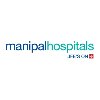Staff Nurse
80+ Staff Nurse Interview Questions and Answers for Freshers

Asked in Narayana Health

Q. What is the normal oxygen saturation rate?
Normal saturation rate is the percentage of oxygen saturation in the blood.
Normal saturation rate is typically between 95% and 100%.
It measures the amount of oxygen bound to hemoglobin in the blood.
A saturation rate below 90% is considered low and may indicate hypoxemia.
Conditions like chronic obstructive pulmonary disease (COPD) can cause lower saturation rates.
Pulse oximeters are commonly used to measure saturation levels.

Asked in Apollo Hospitals

Q. What are the pulse sites?
The sites of pulse are locations on the body where the pulse can be felt.
Common sites of pulse include the radial artery in the wrist, the carotid artery in the neck, the brachial artery in the elbow, the femoral artery in the groin, and the dorsalis pedis artery in the foot.
Pulse can also be felt at other locations such as the temporal artery in the temple, the popliteal artery behind the knee, and the posterior tibial artery behind the ankle.
The strength and rhythm of the p...read more

Asked in Max Healthcare

Q. What is a heart attack?
Heart attack is a medical emergency that occurs when blood flow to the heart is blocked, causing damage to the heart muscle.
Heart attack is also known as myocardial infarction.
It is usually caused by a buildup of plaque in the arteries that supply blood to the heart.
Symptoms include chest pain, shortness of breath, nausea, and sweating.
Immediate medical attention is necessary to prevent further damage to the heart.
Treatment may include medications, procedures to open blocked ...read more

Asked in Sarvodaya Hospital

Q. What is normal bp Pulse Respiration Temprature
Normal vital signs include blood pressure of 120/80 mmHg, pulse rate of 60-100 beats per minute, respiration rate of 12-20 breaths per minute, and temperature of 98.6°F (37°C).
Normal blood pressure is typically around 120/80 mmHg
Normal pulse rate ranges from 60 to 100 beats per minute
Normal respiration rate is between 12 and 20 breaths per minute
Normal body temperature is 98.6°F (37°C)

Asked in Apollo Hospitals

Q. What is hyperkalemia?
Hyperkalemia is a condition where there is an abnormally high level of potassium in the blood.
Hyperkalemia can cause muscle weakness, heart palpitations, and even cardiac arrest.
It can be caused by kidney disease, certain medications, or excessive intake of potassium-rich foods.
Treatment may include medications to lower potassium levels, dialysis, or dietary changes.
Regular monitoring of potassium levels is important for those at risk of hyperkalemia.

Asked in Apollo Hospitals

Q. What are the types of postnatal exercises?
Types of postnatal exercise include pelvic floor exercises, gentle yoga, walking, swimming, and postnatal Pilates.
Pelvic floor exercises help strengthen the muscles that support the pelvic organs.
Gentle yoga can help improve flexibility and reduce stress.
Walking is a low-impact exercise that can be easily incorporated into a postnatal routine.
Swimming is a great way to exercise the whole body without putting too much strain on joints.
Postnatal Pilates focuses on core strength...read more
Staff Nurse Jobs




Asked in Manipal Hospitals

Q. What is blood pressure?
Blood pressure is the force of blood pushing against the walls of arteries.
Blood pressure is measured in millimeters of mercury (mmHg)
It consists of two numbers - systolic pressure (top number) and diastolic pressure (bottom number)
Normal blood pressure is considered to be around 120/80 mmHg
High blood pressure (hypertension) can lead to serious health problems like heart attack and stroke
Low blood pressure (hypotension) can cause dizziness and fainting

Asked in Apollo Hospitals

Q. What is hypokalemia?
Hypokalaemia is a medical condition characterized by low levels of potassium in the blood.
It can cause muscle weakness, cramping, and irregular heartbeat.
It can be caused by certain medications, kidney disease, or excessive sweating.
Treatment may involve potassium supplements or addressing the underlying cause.
Severe cases may require hospitalization and intravenous potassium.
Regular monitoring of potassium levels is important for those at risk.
Share interview questions and help millions of jobseekers 🌟


Asked in Kuwait National Petroleum Company

Q. What is the full form of PPE?
PPE stands for Personal Protective Equipment.
PPE is a set of protective garments, equipment, and accessories used to protect healthcare workers from exposure to infectious materials.
It includes items such as gloves, masks, gowns, goggles, and face shields.
PPE is essential in preventing the transmission of diseases and maintaining the safety of healthcare professionals and patients.
Examples of PPE include N95 respirators for respiratory protection, disposable gloves for hand p...read more

Asked in Sarvodaya Hospital

Q. Communicable disease Non communicable disease Site of injection
Communicable diseases are infections that can be spread from person to person, while non-communicable diseases are not contagious. Site of injection refers to the location on the body where a medication or vaccine is administered.
Communicable diseases are caused by pathogens such as bacteria, viruses, parasites, and fungi. Examples include influenza, tuberculosis, and COVID-19.
Non-communicable diseases are chronic conditions that are not caused by infectious agents. Examples ...read more

Asked in Apollo Hospitals

Q. What are the sites for intradermal injections?
The sites of intradermal injections are typically on the inner forearm or upper back.
Common sites for intradermal injections include the inner forearm and upper back
The inner forearm is often used for TB skin tests
The upper back is commonly used for allergy testing

Asked in Apollo Hospitals

Q. How can anemia be prevented?
Preventing anemia involves ensuring adequate iron intake, consuming foods rich in iron, and managing underlying health conditions.
Encourage a diet rich in iron, such as red meat, poultry, fish, beans, and dark leafy greens.
Consider iron supplements if necessary, under the guidance of a healthcare provider.
Treat underlying conditions that may contribute to anemia, such as gastrointestinal bleeding or chronic kidney disease.
Educate patients on the importance of regular blood te...read more
Asked in Vatika Hospital

Q. How do you coordinate care in emergency situations?
Effective coordination in emergencies involves clear communication, teamwork, and quick decision-making to ensure patient safety.
Assess the situation quickly to determine the severity of the emergency.
Communicate clearly with the team, assigning roles based on expertise.
Utilize established protocols for emergency situations, such as CPR or code blue procedures.
Keep a calm demeanor to help reassure patients and team members.
Document the events and actions taken during the emer...read more

Asked in Narayana Health

Q. What is Dettol?
Dettol is a brand of antiseptic disinfectant used for cleaning wounds and surfaces to prevent infection.
Dettol is commonly used to clean cuts, scrapes, and burns to prevent infection.
It can also be used to disinfect surfaces such as countertops, floors, and bathroom fixtures.
Dettol contains various active ingredients like chloroxylenol and pine oil that have antimicrobial properties.
The brand offers different products like liquid antiseptic, hand sanitizers, and surface disin...read more

Asked in Episource

Q. What is hypoglycemia?
Hypoglycemia is a condition where blood sugar levels drop below normal range.
It is commonly seen in people with diabetes who take insulin or other medications to lower blood sugar levels.
Symptoms include shakiness, sweating, confusion, dizziness, and in severe cases, seizures or loss of consciousness.
Treatment involves consuming foods or drinks high in sugar, such as fruit juice or candy, to raise blood sugar levels.
Prevention includes regular monitoring of blood sugar levels...read more

Asked in Care Hospital

Q. Iv cannulation and types of burns
Iv cannulation is the process of inserting a tube into a vein to administer medication or fluids. Burns are classified into different types based on their severity.
There are different types of IV cannulas such as butterfly, over-the-needle, and through-the-needle.
First-degree burns only affect the outer layer of skin, while third-degree burns penetrate through all layers of skin and can damage muscles and bones.
Second-degree burns are more severe than first-degree burns and c...read more

Asked in Continental Hospitals

Q. Are you available for an interview at this time?
Yes, I am comfortable for this interview and ready to discuss my qualifications and experiences as a Staff Nurse.
I have prepared thoroughly for this interview by reviewing common nursing scenarios.
I am familiar with the hospital's values and mission, which aligns with my professional goals.
I have practiced answering potential questions with a friend to build my confidence.
I am mentally and emotionally ready to discuss my experiences in patient care.

Asked in Max Healthcare

Q. How will you assess the patient?
Assessing a patient involves gathering information about their current condition and medical history.
Start by introducing yourself and explaining the purpose of the assessment
Observe the patient's physical appearance and behavior
Take vital signs such as blood pressure, heart rate, and temperature
Ask the patient about their symptoms and medical history
Perform a physical examination of the patient's body
Use diagnostic tests such as blood tests or imaging scans if necessary
Docum...read more
Asked in Noora Hospital

Q. What are the routes of medicine administration?
Routes of medicine administration include oral, topical, inhalation, injection, and rectal.
Oral - medication taken by mouth
Topical - medication applied to the skin
Inhalation - medication inhaled into the lungs
Injection - medication administered through a needle into the body
Rectal - medication inserted into the rectum
Examples: Oral - tablets, capsules; Topical - creams, ointments; Inhalation - inhalers; Injection - intramuscular, intravenous; Rectal - suppositories

Asked in Safdarjung Hospital

Q. What are the symptoms of Corona?
Common symptoms of COVID-19 include fever, cough, and difficulty breathing.
Fever
Cough
Shortness of breath
Fatigue
Muscle or body aches
Headache
Sore throat
Loss of taste or smell
Congestion or runny nose
Nausea or vomiting
Diarrhea
Asked in Preet Hospital

Q. Do you believe in personality or hard work?
Mehnat aur personality dono hi mahatvapurn hain, lekin mehnat se hum apne lakshya ko prapt kar sakte hain.
Mehnat se hum apne skills ko sudhar sakte hain, jaise ek nurse ko patient care mein maharat hasil karni hoti hai.
Personality se humara vyavhaar aur communication skills prabhavit hote hain, jo nursing mein zaroori hain.
Ek udaharan: ek nurse jo mehnat karti hai, wo apne patients ke liye zyada samay de sakti hai aur unki bhavnaon ko samajh sakti hai.
Mehnat se hum challenges...read more

Asked in Aster MIMS

Q. Cannulation procedure
Cannulation is a medical procedure where a tube is inserted into a vein or artery to administer medication or fluids.
Ensure proper hand hygiene before starting the procedure
Select appropriate size and type of cannula based on patient's condition
Clean the insertion site with antiseptic solution
Use a tourniquet to make the veins more visible and easier to access
Secure the cannula in place with tape or a dressing
Monitor the site for signs of infection or complications

Asked in Vivekananda Hospital

Q. How many steps are involved in hand hygiene?
There are 5 steps in hand hygiene.
Wet hands with water
Apply soap and lather well
Rub hands together for at least 20 seconds
Rinse hands thoroughly with water
Dry hands with a clean towel or air dryer

Asked in Koshys Group of Institutions

Q. Rights of patients? Sights of IM injection?
Patients have the right to receive quality care and be treated with respect and dignity. IM injection sites include deltoid, vastus lateralis, and gluteus maximus.
Patients have the right to informed consent, privacy, confidentiality, and access to their medical records.
Patients have the right to refuse treatment and to be involved in their care plan.
IM injection sites include the deltoid muscle in the upper arm, the vastus lateralis muscle in the thigh, and the gluteus maximu...read more

Asked in Maharaja Agrasen Hospital

Q. What is CAUTI , VAP , and SSI
CAUTI stands for Catheter-Associated Urinary Tract Infection, VAP stands for Ventilator-Associated Pneumonia, and SSI stands for Surgical Site Infection.
CAUTI is an infection that occurs in the urinary tract due to the use of a catheter.
VAP is a type of pneumonia that occurs in patients who are on mechanical ventilation.
SSI is an infection that occurs at the site of a surgical incision.

Asked in Aster MIMS

Q. How do you calculate drops per minute?
Drops per minute calculation is important for accurate medication administration.
Calculate drops per minute by using the formula: (Volume to be infused in ml x drop factor) / time in minutes
Drop factor is usually provided by the manufacturer and is the number of drops per ml for the specific tubing set being used
For example, if the volume to be infused is 500 ml, drop factor is 15 drops/ml, and time is 60 minutes, the calculation would be: (500 x 15) / 60 = 125 drops per minu...read more

Asked in Narayana Health

Q. International patient safety goals
The International Patient Safety Goals are a set of guidelines established by the World Health Organization to improve patient safety worldwide.
The goals focus on areas such as medication safety, infection control, communication, and patient identification.
Examples include ensuring accurate patient identification before administering medications, reducing the risk of healthcare-associated infections, and improving communication among healthcare providers.
These goals aim to st...read more

Asked in Aster MIMS

Q. Prevention of nososcomial infection
Prevention of nosocomial infections involves implementing strict infection control measures to reduce the spread of pathogens within healthcare settings.
Proper hand hygiene is crucial in preventing the transmission of infections. Nurses should wash their hands regularly and use hand sanitizers.
Following standard precautions such as wearing gloves, gowns, masks, and eye protection when necessary.
Implementing isolation precautions for patients with known or suspected infections...read more


Q. How can CLABSI be prevented?
Preventing CLABSI involves proper hand hygiene, using chlorhexidine for skin preparation, and implementing aseptic techniques during catheter insertion.
Practice proper hand hygiene before and after catheter insertion
Use chlorhexidine for skin preparation before catheter insertion
Implement aseptic techniques during catheter insertion and maintenance
Regularly assess the need for catheters and remove them as soon as they are no longer necessary

Asked in Vivekananda Hospital

Q. How many steps are involved in handwashing?
There are 6 steps in proper handwashing technique.
Wet your hands with clean, running water
Apply soap and lather well
Scrub all surfaces of your hands for at least 20 seconds
Rinse your hands thoroughly under running water
Dry your hands with a clean towel or air dry them
Turn off the faucet using a paper towel to avoid recontamination
Interview Questions of Similar Designations
Interview Experiences of Popular Companies








Reviews
Interviews
Salaries
Users

















